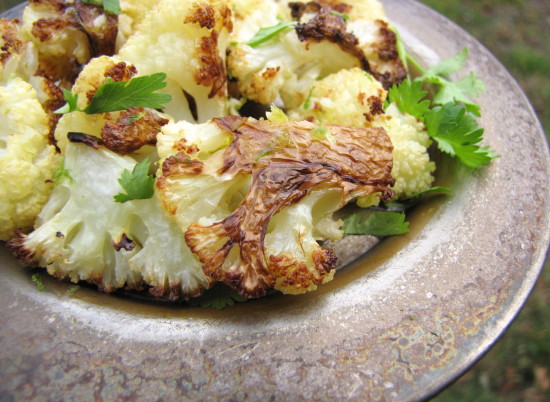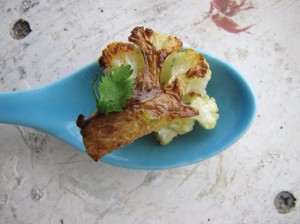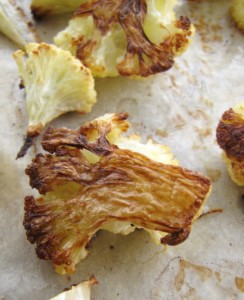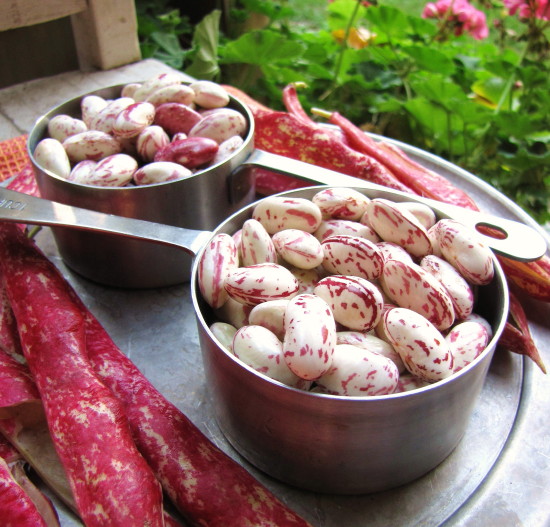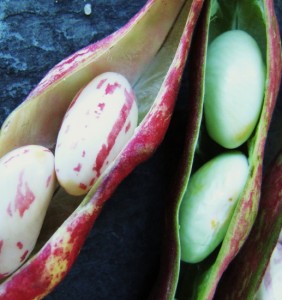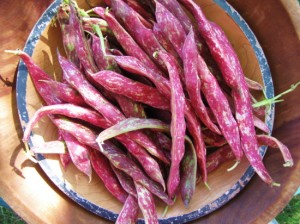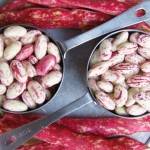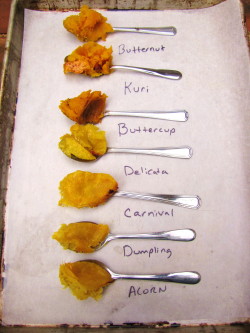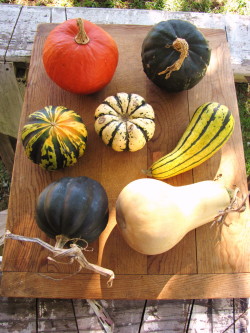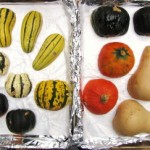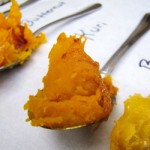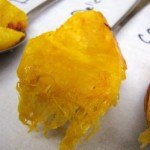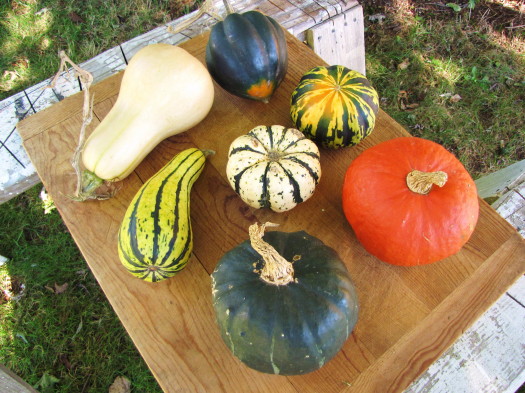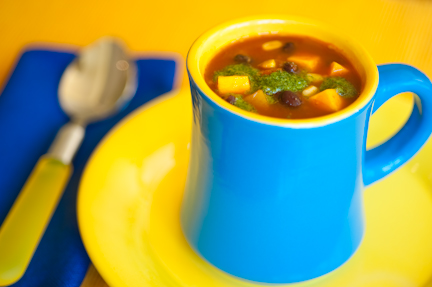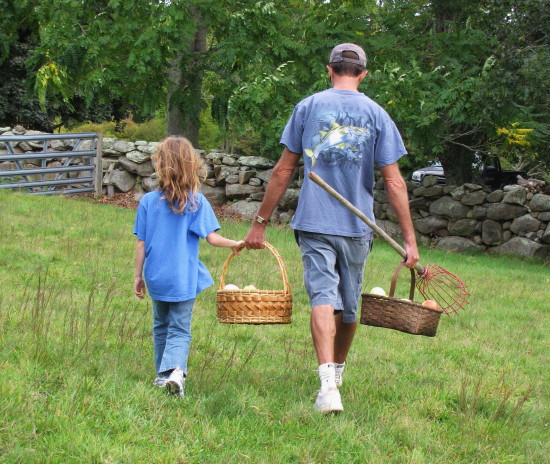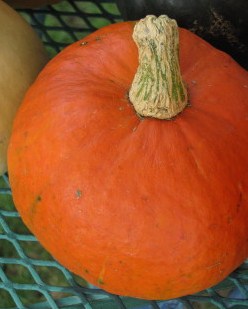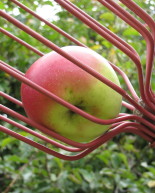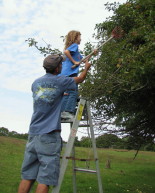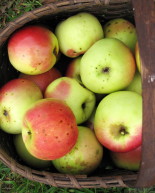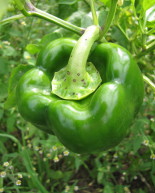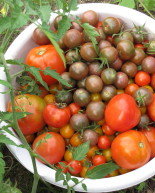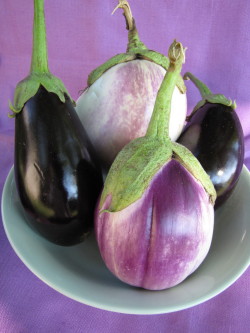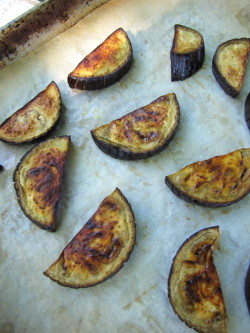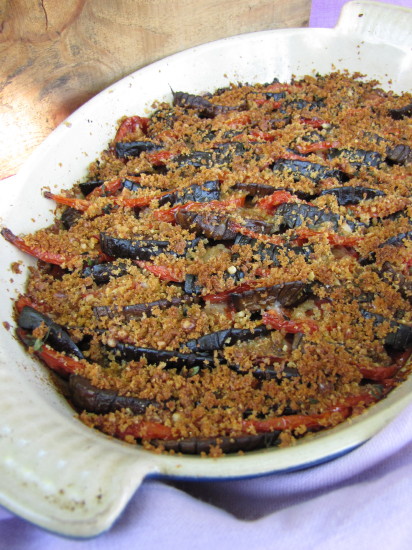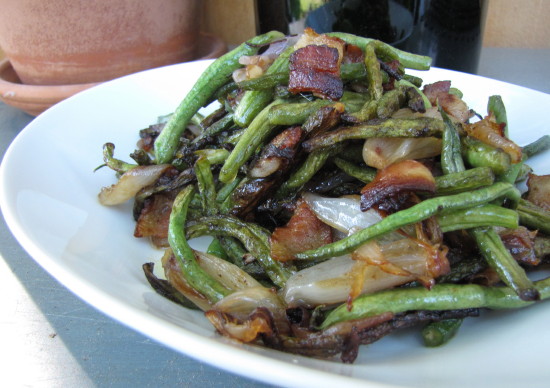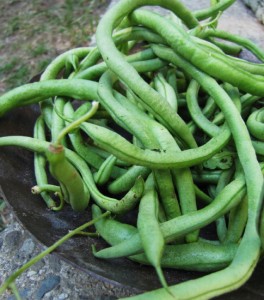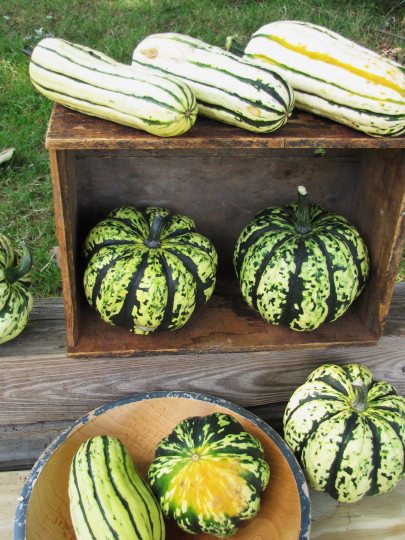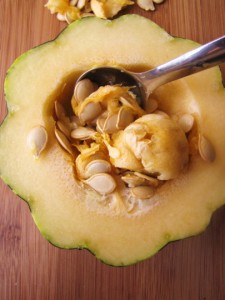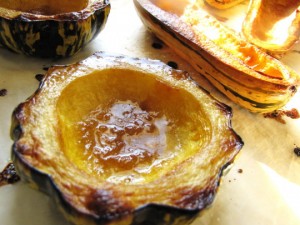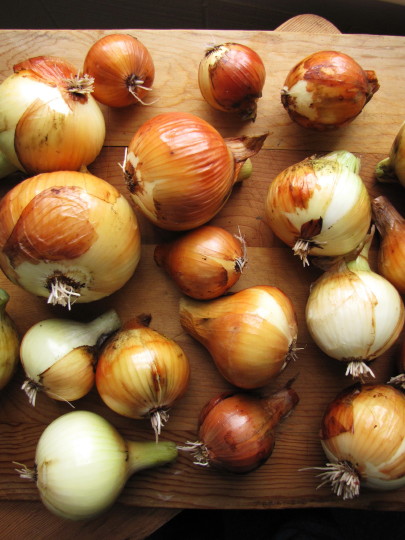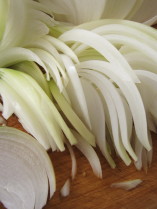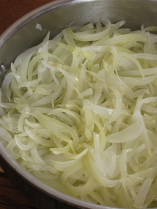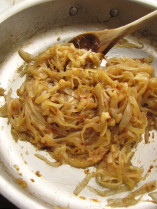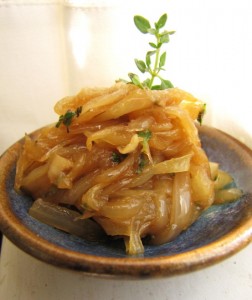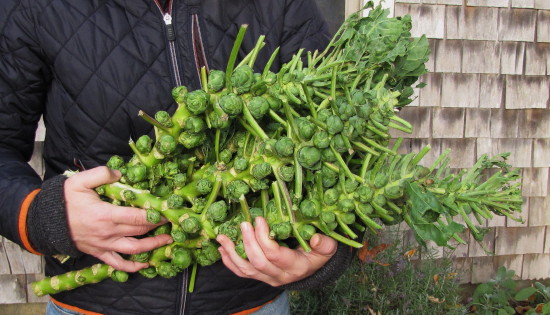 Brrrrr…..Brussels sprouts. The two seem to go together. But I guess I’ll never know if frost makes sprouts sweeter (so they say), since we harvested all our Brussels sprouts from the garden last night—and this morning woke up to a shiny silver blanket of frost (our first) on the fields all around us.
Brrrrr…..Brussels sprouts. The two seem to go together. But I guess I’ll never know if frost makes sprouts sweeter (so they say), since we harvested all our Brussels sprouts from the garden last night—and this morning woke up to a shiny silver blanket of frost (our first) on the fields all around us.
The amazing thing is that we have any Brussels sprouts at all. Watching the flea beetles ravage them in late summer, I all but gave up on them until about a month ago when I noticed little sprouts were forming anyway. So I topped off a few of the plants to see if that would increase the size of the sprouts. (Now that I’ve harvested, I can’t really tell. All the stalks have sprouts of all different sizes on them, bigger ones at the top.)

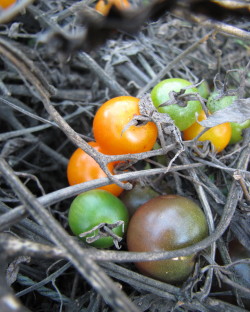 Last night we made a foray over to our much neglected garden to continue trying to break it down. But if you ever want to better understand the will to live, visit a vegetable garden on Martha’s Vineyard in early November. Not only did we have dozens of eggplants hanging off the plants, but the cherry tomatoes are still ripening even though we pulled the vines down. (It’s the warm sea air.) And we came back with buckets of kale, chard, and mustard greens; about 100 green peppers (I’m not kidding–friends are stopping by today to pick some up!); a couple of hidden potatoes, and…a big armful of Brussels sprouts stalks.
Last night we made a foray over to our much neglected garden to continue trying to break it down. But if you ever want to better understand the will to live, visit a vegetable garden on Martha’s Vineyard in early November. Not only did we have dozens of eggplants hanging off the plants, but the cherry tomatoes are still ripening even though we pulled the vines down. (It’s the warm sea air.) And we came back with buckets of kale, chard, and mustard greens; about 100 green peppers (I’m not kidding–friends are stopping by today to pick some up!); a couple of hidden potatoes, and…a big armful of Brussels sprouts stalks.
The sprouts were the last thing we picked from the garden, as they’re in the far corner. We scrambled over the nasturtiums and zinnias (still blooming) to get to them, and found the stalks standing tall and alien-like, with their holey wings extended nearly far enough for the goats to nibble on them through the fence. And yes, they were covered with sprouts—many that didn’t even have holes in them! We yanked them out of the ground and carted our harvest back to the car.
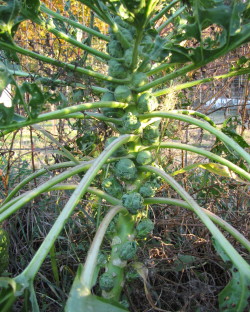
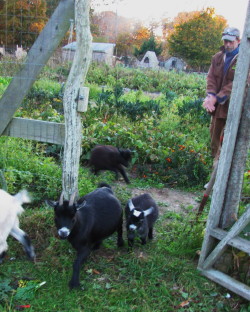 (On our way out of the garden, we were ambushed by about six of the mama goats and their now-big babies, who’ve been waiting all summer to get into our garden. Our hands were full, we couldn’t stop them, so in they came, heading straight for the remaining kale and chard. We packed the car, came back and shooed them out, but they were all smiling. They had this planned.)
(On our way out of the garden, we were ambushed by about six of the mama goats and their now-big babies, who’ve been waiting all summer to get into our garden. Our hands were full, we couldn’t stop them, so in they came, heading straight for the remaining kale and chard. We packed the car, came back and shooed them out, but they were all smiling. They had this planned.)
This morning I made quick-braised Brussels sprouts and this afternoon I’m planning on a Tuscan kale soup to start using our goodies. The quick-braising technique (for more details, see Fast, Fresh & Green) is such a great one for Brussels sprouts as the sprouts get to brown in the pan first (for great flavor), and then finish cooking to the perfect texture in a little liquid. That liquid simmers down to make a little bonus pan sauce in the end, too. Below you’ll find the variation I made today.
 Quick-Braised Brussels Sprouts
Quick-Braised Brussels Sprouts
Brussels sprouts vary a lot in size—not just in the garden, but in the grocery store, too. If you can, choose medium-sized sprouts—or at least sprouts that are all close in size to each other. If you can only find very large or very small sprouts, you can increase or decrease the liquid by a little bit (2 to 3 Tbsp.) to assure that your sprouts will be cooked properly. (Also feel free to eliminate the white wine and use all chicken broth.) Whatever size sprouts you wind up with, be sure they fit in one layer (once you cut them in half) in your 10-inch straight-sided pan. If there are extras, put them aside, as the sprouts won’t cook evenly if they’re in more than one layer.
___________________________________________
¼ cup dry white wine
¼ cup lower-sodium chicken broth
2 tablespoons unsalted butter
1 tablespoon extra-virgin olive oil
¾ lb. Brussels sprouts, trimmed and halved
3/4 teaspoon kosher salt
1 teaspoon minced garlic
1/2 small lemon
chopped fresh parsley or chives (optional)
_______________________________________________
Combine the white wine and chicken broth in a liquid measure.
In a 10-inch straight-sided sauté pan with a lid, melt 1 ½ tablespoons of the butter with the olive oil over medium heat. Arrange the sprouts, cut side down, in one layer in the pan. (You’ll have to tuck them in snugly.) Season with the salt. Cover and cook the sprouts until the bottoms are nicely browned, 3 to 6 minutes. (If the heat on your stovetop is uneven, rotate the pan so that the bottoms get evenly browned.) Pour the wine/chicken broth mixture into the pan and cover the pan mostly with the lid (leave it slightly askew for a little steam to escape). Adjust the heat so that the liquid is just gently simmering.
Cook until the broth is reduced to about 2 tablespoons, 6 to 8 minutes. Uncover and add the remaining 1/2 tablespoon butter and the garlic. Toss well and stir just until the butter has melted. Remove the pan from the heat, and continue to stir gently until the garlic are well-incorporated and slightly softened. Gently squeeze the lemon half over all, toss, and serve.
Serves 3 to 4

